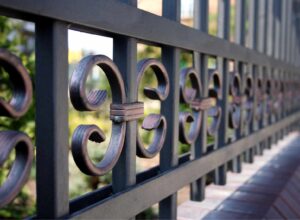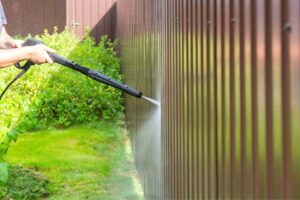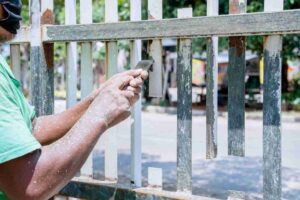Best Fences for Security
When it comes to security, any fence is better than no fence at all. On the other hand, some fences are a lot better than others when it comes to deterring intruders.
If you’re looking to install a fence to keep your home and family safe, here’s what you need to know about the best fences for security. In the guide below, we’ll cover everything from fence materials and styles to additional security features.
What Is a Security Fence?
A security fence is the first obstacle standing between a criminal and your home — but if it’s effective, it’s the only one you’ll need.
Here are some features to look for in a functional security fence:
- Imposing height: The higher the fence, the harder it is for potential intruders to climb over it. Aim for a height of at least 6 feet tall.
- Difficult to climb: If your fence uses horizontal railings, make sure the vertical fence pieces are spaced close together. This prevents trespassers from using them as handholds or footholds. Spikes and pointed fence pickets can help deter climbing as well.
- Sturdy construction: A secure fence should be built with sturdy materials. While metals such as wrought iron and aluminum are the most difficult to breach, that doesn’t mean other fence materials like wood or vinyl aren’t secure. Just make sure the fence is free of damaged spots or gaps. It should also lie close to the ground so that intruders can’t easily slip underneath.
- Concealed or unobstructed sight lines: You can either opt for a see-through fence (think wrought iron or aluminum bars) or a privacy fence (like wood or vinyl). While we tend to recommend the latter for security fences, there are advantages to the former: With unobstructed views, homeowners can see if anyone is lurking about, and it might make intruders think twice if they’re afraid of being visible.
What Are the Best Fences for Security?
For homeowners, the best fence for security is a vinyl or wood privacy fence, which prevents potential home invaders from seeing into your yard.
Why choose a privacy fence as a security fence?
“Fences made out of metal like aluminum and wrought iron might be harder to cut through, but they tend to provide high visibility,” explains Chris Herman, Founder of Top Rail Fence. “This is why I recommend privacy fences — tall, solid fences that block views of your property — for people looking for security. Privacy itself acts as a deterrent to would-be criminals.”
Below, we explain each of these fence options for securing your property, as well as some others.
Vinyl Fences
Vinyl (also known as PVC) is a sturdy, long-lasting material that’s relatively easy to install but difficult to break down or breach. Known for its gleaming white finish, vinyl is generally appreciated for its aesthetic qualities. It also comes in a variety of sizes, colors, and styles.
There’s no need to stain or paint vinyl, and very little maintenance is needed compared to wood fences. However, vinyl fences require more cleaning compared to other fences in order to keep them in tip-top shape. They also tend to come with a higher price tag.
Wood Fences
While wood isn’t going to keep determined criminals from breaching your property (it’s easy to break through or pry loose), wood fences can be built to stand tall and provide privacy. This prevents would-be trespassers from scoping out your home.
A beautiful wood fence can add curb appeal and property value for less than you would pay for a vinyl fence. However, compared to other fence materials such as aluminum or chain link, wood has a shorter lifespan.This is due to its vulnerability to damage from fungus, pests, UV rays, and the elements. But when well maintained, wood fences can last 15 to 20 years.
The type of wood you choose can also make a difference in your fence’s lifespan. For instance, fences made of redwood, which is known for being resistant to rot and infestation, have been known to last up to 25 years.
Other Security Fence Options
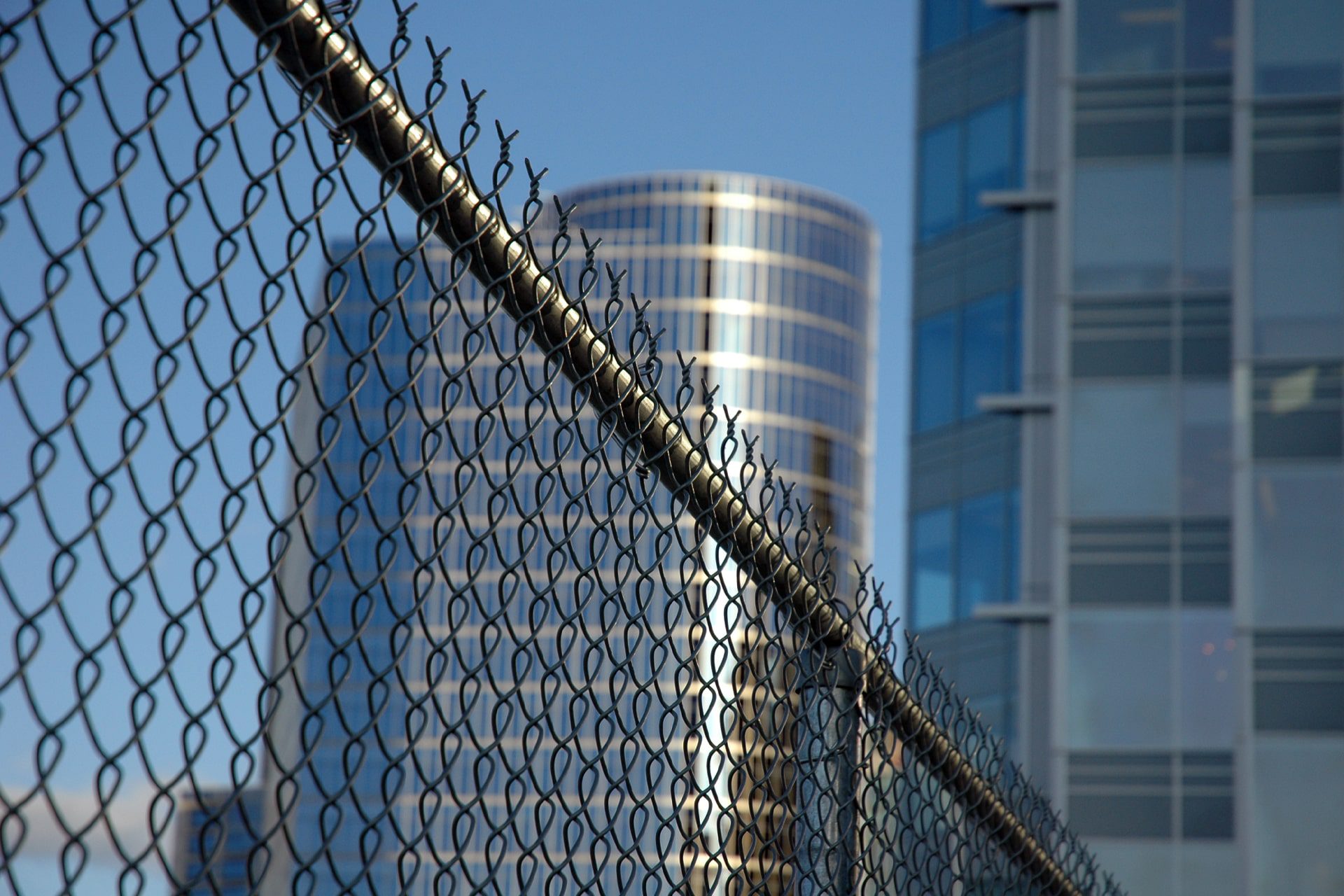
Chain Link Fences
A chain link fence can serve as security fences for both residential as well as commercial properties. However, it may not be approved by city ordinances. Chain link fences can add a layer of security around your property, but they have a couple of weaknesses: Chain link wire is easy to snip through and can be relatively easy to climb.
A 6-foot chain link fence with three rows of barbed wire at the top is a perfect choice for deterring climbing. A chain link fence can also be electrified for extra security and paired with other security features such as surveillance cameras and alarms (see below). On the plus side, chain link is an affordable and long-lasting security fence option.
There are also multiple types of chain link fencing so you’re not limited to just one type.
Aluminum Fences
Aluminum is a popular choice for those who aren’t fans of chain link but don’t want to obstruct their view with a wood privacy fence. Pricing-wise, aluminum costs almost as much as vinyl. But compared to other metal fence materials, it’s the least expensive option besides chain link. Aluminum fences are also rust-resistant and require very little maintenance. This can help save on costs down the road.
Standard aluminum fences average 48 inches to 54 inches in height, making them shorter than most adults, and they don’t afford much privacy. However, aluminum is a popular choice for homeowners or apartment or condo property managers looking to keep the perimeter around a pool secure for liability purposes.
Additional Security Factors
Adding a security fence to your home is an important first step. There are several ways to bolster its effectiveness with added security features.
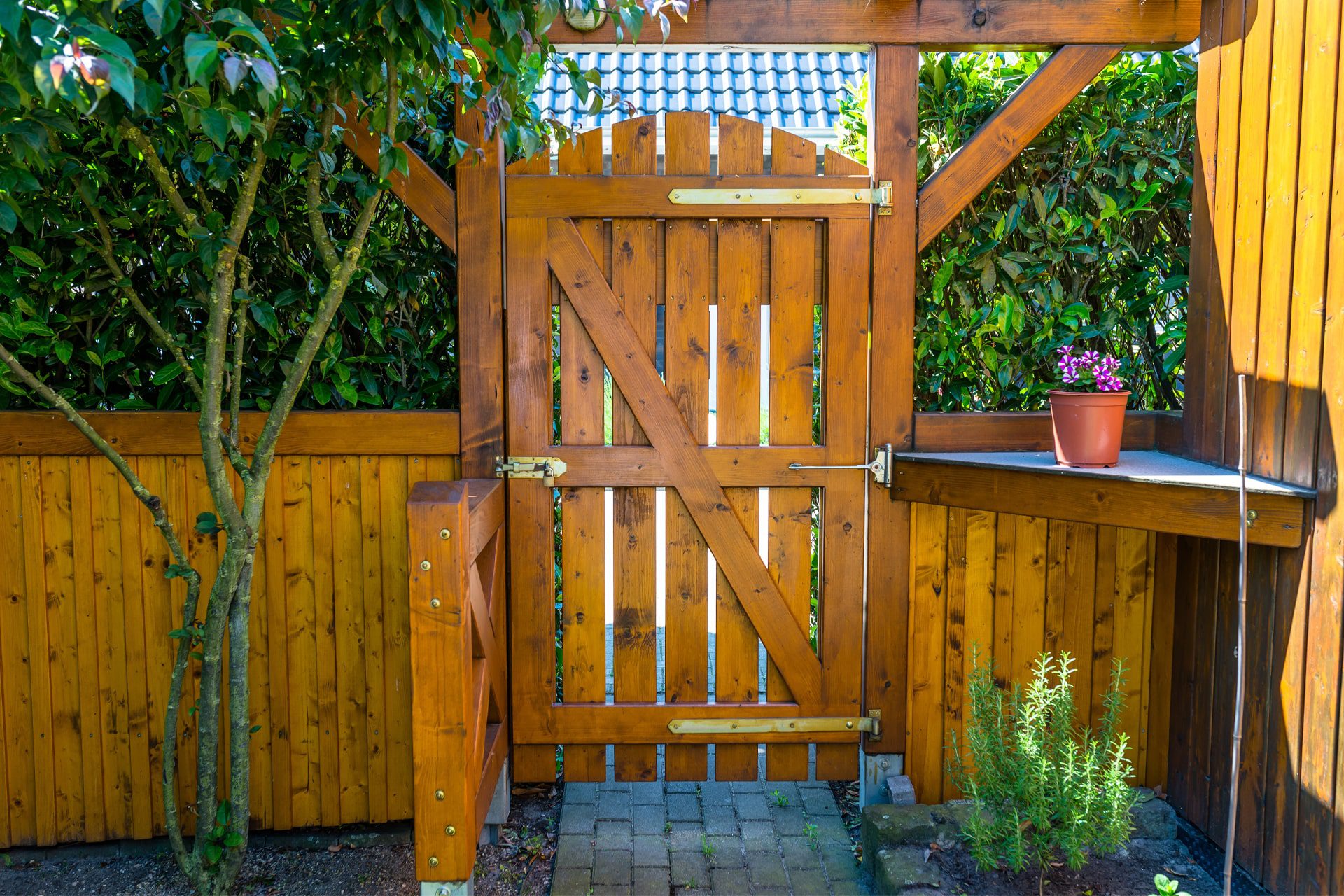
- Gates
A security fence isn’t complete without a security gate fitted with a heavy-duty locking mechanism. Gates are priced separately from fences in most cases. On average, a fence gate will cost around $2,000, which includes materials, locks, and labor. Your actual cost will vary according to size, materials, and your location.
- Surveillance cameras
Homeowners have the choice between wired and wireless home security cameras. While wired home security cameras offer permanent connection and higher-quality, 24/7 footage, they can be harder and more expensive to install. On the other hand, wireless cameras are battery-operated and connected via Wi-Fi. This makes them easier and cheaper to set up. While they can be easily integrated into smart home systems, they tend to only record when the motion sensor is activated. They’re also liable to lose connection if your wireless network goes down.
- Motion-activated lights
Lights are always an effective deterrent to would-be home invaders. In fact, this study showed that outdoor lighting reduced crime by 39 percent. Bright lights that turn on when someone comes close to your fence tell the trespasser they’re nearing a home that someone cares about protecting. It also alerts them to the fact that someone may be home, or other security enforcements may be in place. Either way, it’s hard to get away with breaking into a property with a spotlight shining down on you.
- Signs
Sometimes signage on a fence is enough to warn would-be burglars away. Popular signs announce the presence of surveillance cameras on the property (“Smile! You’re on Camera!”) or warn that a protective canine lives there (“Beware of Dog”). Neither needs to be true — the intent is to make the person think twice, then choose to walk away.
- Alarms
Whereas cameras can have blind spots where intruders can slip by, fence alarms can be used to monitor the entire perimeter of a fence. Wireless contact sensors can also be added to gates to alert homeowners in case a gate is opened.
- Anti-climbing devices
Perhaps the classic version of an anti-climb device is barbed wire coiled on top of a fence. However, this isn’t particularly attractive, and it’s not typically approved by homeowners’ associations. Thankfully, there are friendlier versions. They include rollers that resist hand grips and footholds, as well as thin spike strips in a variety of shapes, sizes, and colors.
- Anti-climbing paint
One approach to deterring climbing that isn’t exactly a “device” is anti-climbing paint, also known as anti-vandal grease. This thick, oily substance never dries, making it almost impossible to get a grip, even with sneakers or gloves. This do-it-yourself option does require upkeep every few years. And the outside of your fence may not be friendly to wildlife, pets, or children.
Installing a Security Fence
Ready to install your security fence? Here are some things to keep in mind:
- Find out if your property has any permit or zoning constraints that might dictate how, when, or where you can install a fence. There may also be regulations against certain kinds of security fences. If you’re a member of a homeowner association, reach out to learn about any other governances that could impact your plans.
- Consider the labor and liability involved: Installing a fence is no easy feat. It involves precise measurements, a meticulous understanding of land topography and composition, and hard work outdoors. Fences that aren’t properly installed are more likely to fall over — for example, during bouts of inclement weather — putting people and property at risk.
- Failure to install a fence properly compromises its greatest asset — its security. This is why for peace of mind, most homeowners and property management companies depend on professional contractors for reliable fence installation.
At Top Rail Fence, we’re dedicated to only offering high-quality fence products installed by trained professionals. When you choose Top Rail’s premium fencing options and installation, you’re making an investment that will bring you security and peace of mind for years to come.
Looking for help with your fence project? Contact our team for a free quote.
